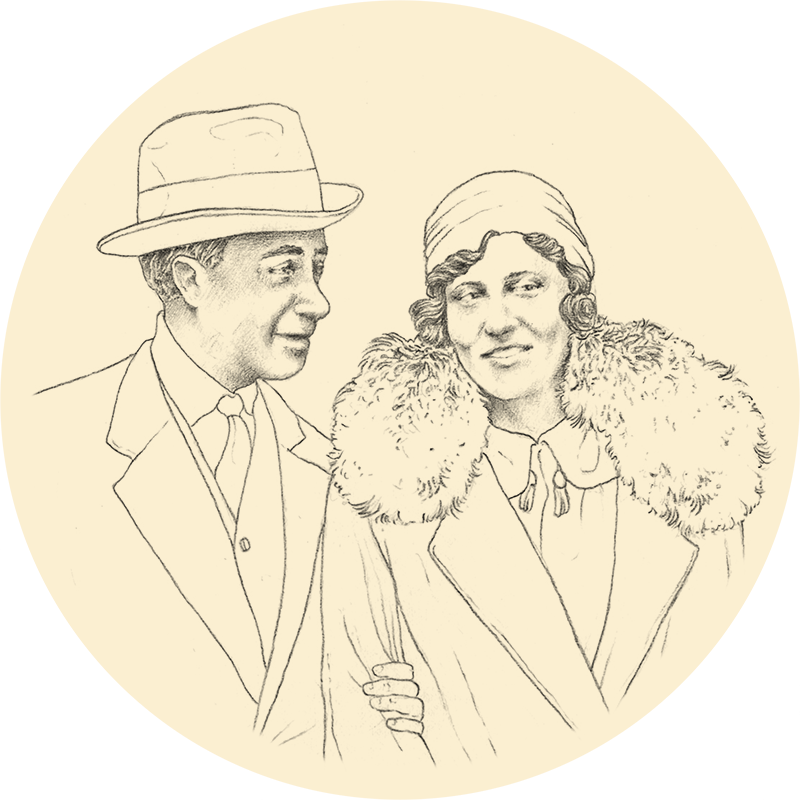You bought artworks. Paintings, decorative objects, drawings, sculptures. Your obsession. It was often a way to help out struggling young artists. But you were not motivated by the mirage of future gains. You weren’t looking to make a profit. You bought, but you never sold. Once, Marieda, you were in Paris, on your own, and you wanted to buy a fur coat. You came back home, instead, with an enormous De Chirico rolled up around a pole, purchased from the Rosenberg collection.
You bought, continuously. Your nephew, Marieda, who lived (and still lives) downstairs, Alessandro Mendini – maybe it is true that living surrounded by art can make you become an artist, almost unintentionally – remembers, with an affectionate smile, your constant hammering on the walls. «Every evening I heard their hammer beating on the walls to put up nails to hang new paintings, or to move them.»
An obsession. Works everywhere. So many that over the years you were running out of wall space. You hung paintings on doors, on shutters: everywhere. Whole collections of original drawings, stuffed under the double bed.
During World War II moving the collection to Bedizzole, on Lake Garda, for fear of bombings, was a titanic undertaking. As was the return trip, hanging the paintings again, making space for new acquisitions. You were in the Rotary Club, Antonio, you had a box at La Scala, as was customary, you met friends along the streets of the city, but your treasure chest of wonders was the preferred place to encounter guests and artists, at your monthly dinners.
Over two thousand artworks were packed into your home. So many that you could make a museum. And that, effectively, is just what happened. With your first donation, Antonio, in 1974, the City of Milan was able to open, with great ceremony, the Civic Museum of Contemporary Art. The most solid, precious nucleus of what is now known as the “Museo del ‘900,” whose organization was completed in 2010 by Italo Rota at the Arengario, a building designed, among others, by Piero Portaluppi, of course.
Yours was an obsession, it’s true, but it wasn’t blind. You didn’t accumulate things at random. You had a clear idea about what to collect. Artists like Sironi, Martini, Savinio, Fontana passed through your rooms. Because you loved their work, often when they were still not known to most people.
